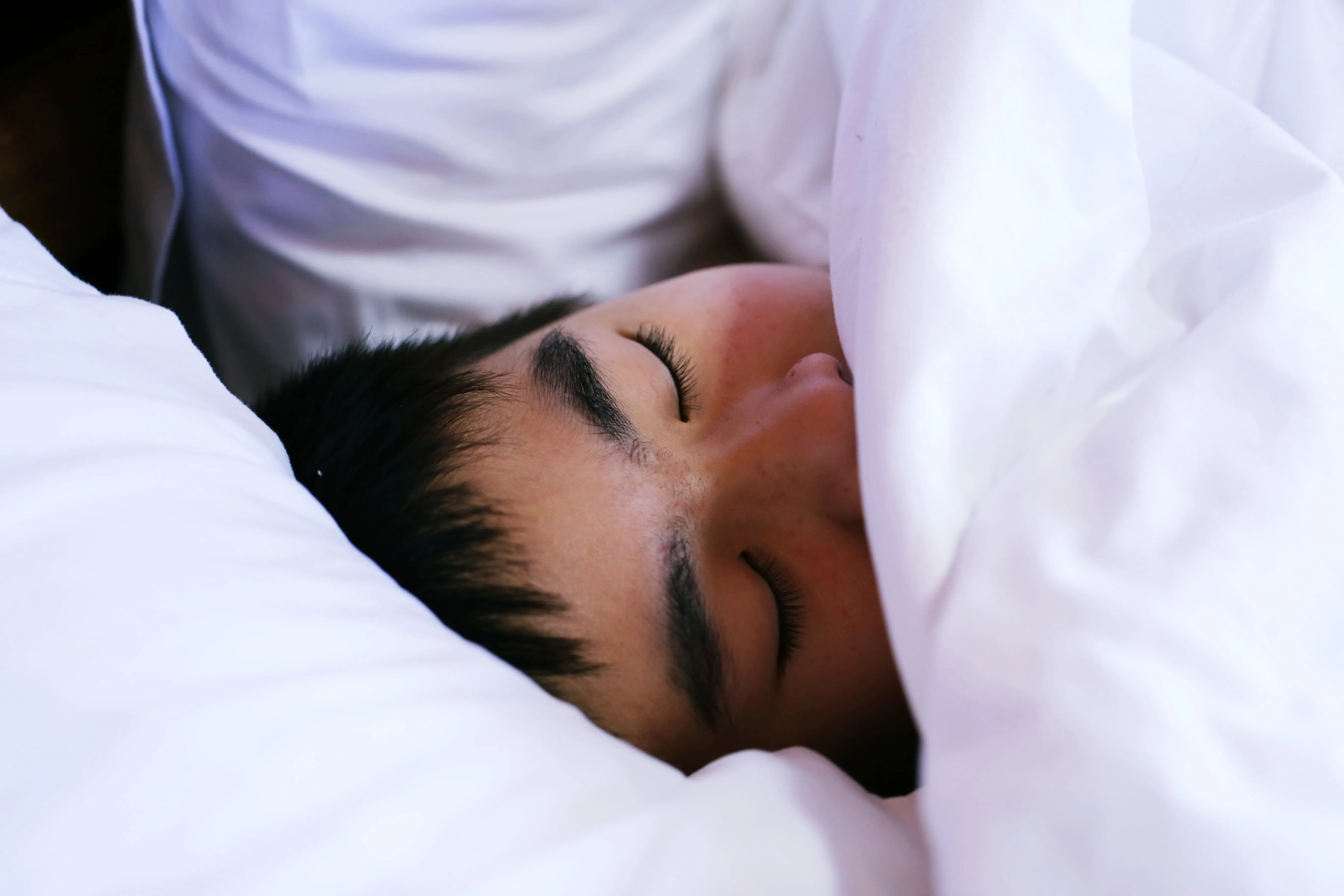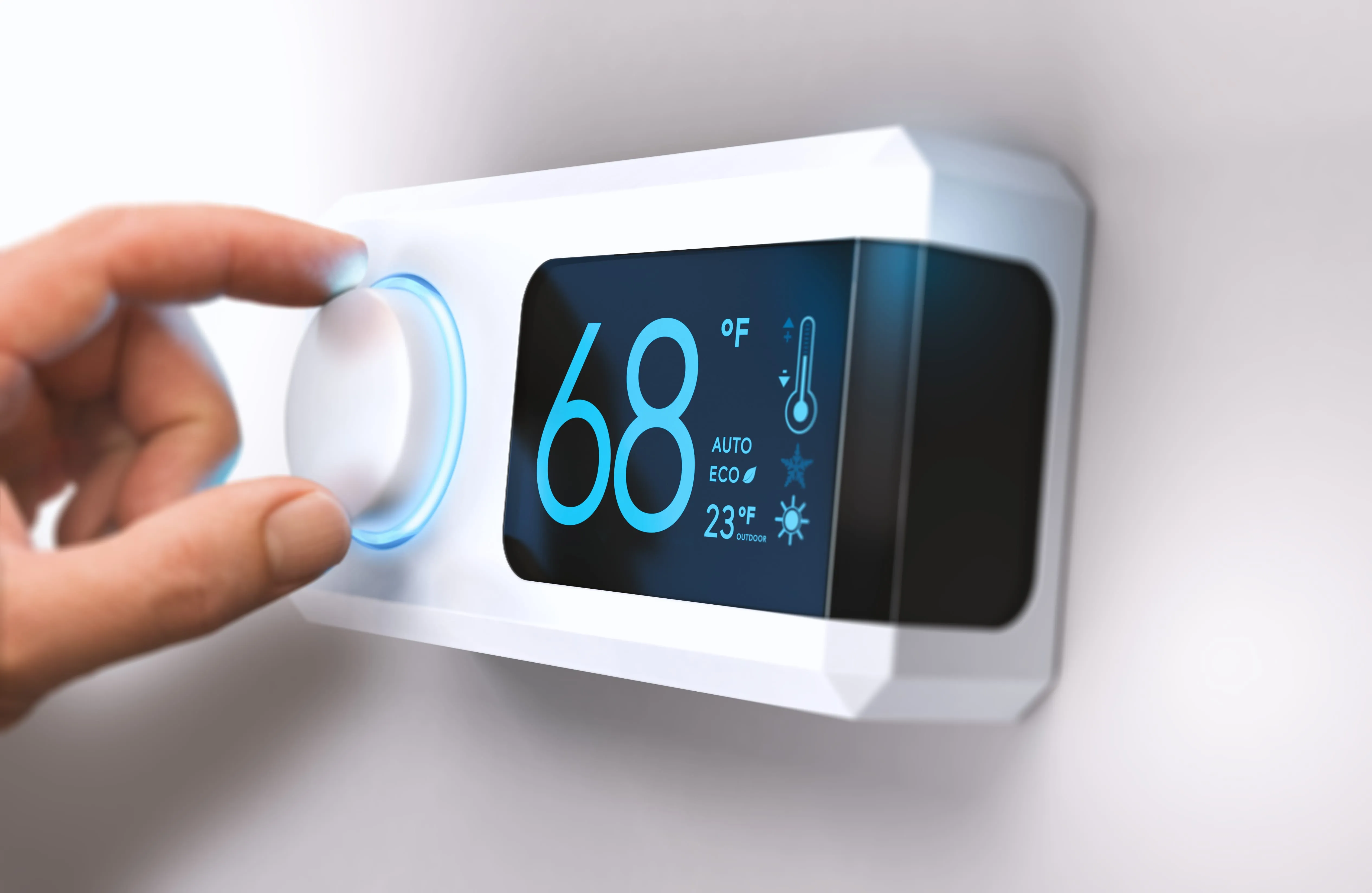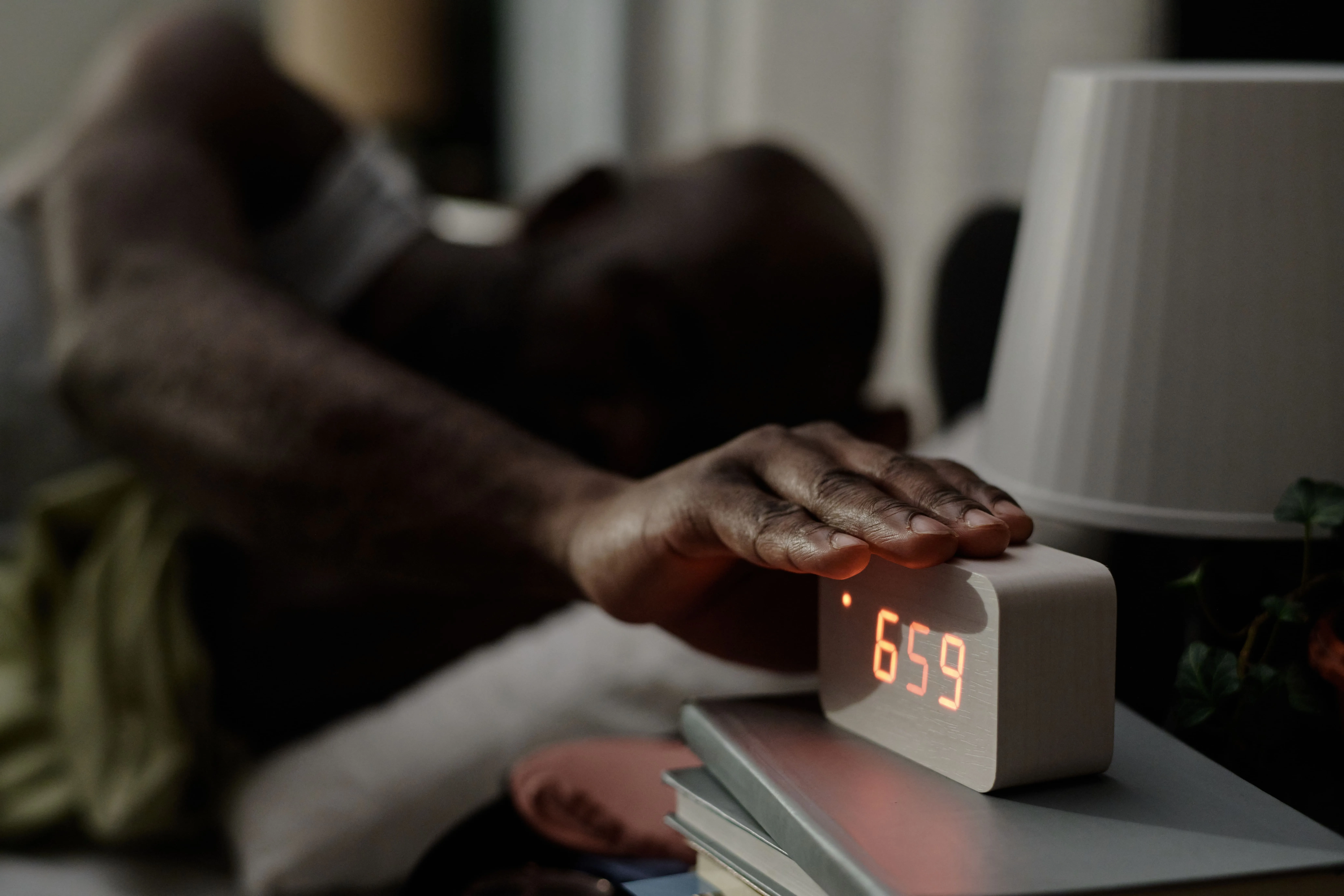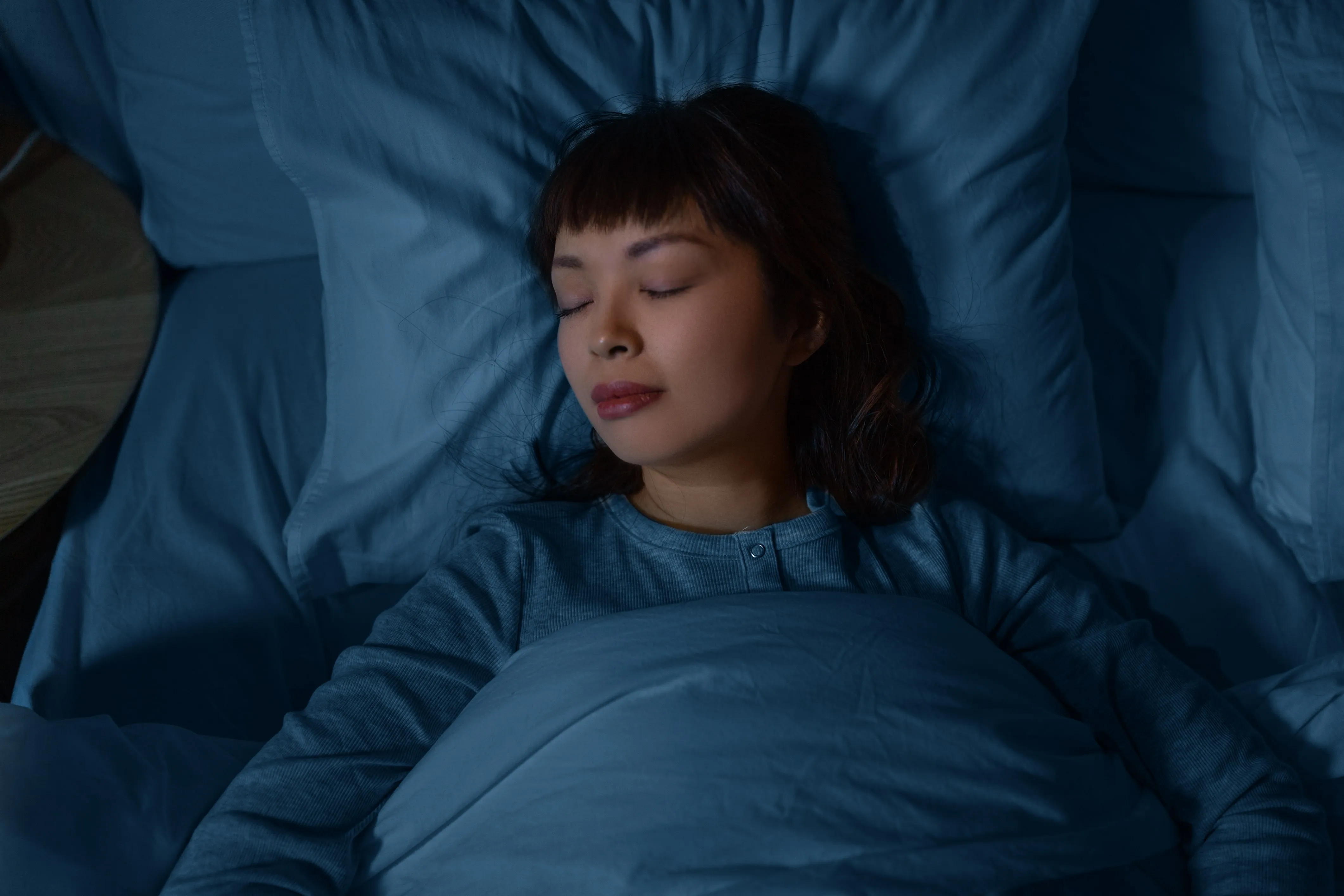Key Takeaways
- Room temperature and bedroom humidity may impact your sleep quality and overnight glucose stability.
- A cool, comfortable, and balanced sleep environment supports insulin sensitivity and promotes metabolic recovery during the night.
- With Signos, you can track how changes in your sleep environment impact your personal glucose patterns and metabolic health.
{{mid-cta}}
Most people don’t realize that the temperature and humidity of your sleep environment can quietly impact your metabolic health while you rest. A room that’s too warm, too chilly, or marked by high humidity or low humidity can disrupt sleep quality, stress your body’s natural thermoregulation, and even affect insulin sensitivity and overnight glucose stability.
When your body rests in the ideal humidity level and temperature range, it’s more likely to maintain steady blood sugar, recover efficiently, and support your long-term health.
Why Temperature & Humidity Matter for Overnight Metabolism

Sleep is when you’re “shutting down” for the day, but it’s a highly active time for metabolic repair under the surface. Your body cycles through stages of deep and REM sleep, as well as slow-wave sleep, releasing hormones, repairing tissues, and regulating blood sugar levels. By dialing in the right air temperature, relative humidity, and moisture levels, you can improve comfort levels, enhance sleep quality, and support more consistent blood sugar regulation while you rest.
- Temperature and blood glucose: A cooler air temperature at night (around 65 °F) supports your body’s natural circadian rhythms. Use your thermostat or HVAC system to maintain the ideal temperature, and consider air circulation from air conditioners or fans to promote steady cooling.1
- Humidity and blood glucose: High heat and high humidity levels can create a muggy or humid environment that interferes with cooling and increases the amount of water vapor in the air. Over time, excess moisture indoors can promote mold growth, mildew, and dust mites, all of which worsen allergens and may trigger asthma symptoms or respiratory infections.2 Meanwhile, low humidity and dry air can lead to dry skin, irritated nasal passages, or itchy eyes, all of which can disrupt sleep.3 Keeping bedroom humidity within the ideal humidity level (around 40–50%, according to the Environmental Protection Agency) supports indoor air quality and a more restful night.
To manage indoor humidity levels, use a dehumidifier in damp climates or a humidifier when the air feels too dry. Adjust based on the dew point or weather to maintain optimal moisture levels year-round.
Signos Guidance: Crafting Glucose-Friendly Sleep Climates
-min.webp)
With Signos, you can see how adjusting your sleep environment affects your glucose patterns and use that feedback to fine-tune conditions for better rest and recovery.
How Signos Can Help:
- Personalized Glucose Feedback Loop: Observe how your glucose levels respond to changes in temperature and humidity. If you run hot at night, try making small adjustments, such as lowering the thermostat, switching to breathable bedding, or running a dehumidifier, and review your overnight glucose curve in the morning.
- Finding Your Optimal Sleep Temperature: Research shows that cooler environments (around 65 °F) promote deeper sleep and better metabolic recovery. With Signos, you can track how adjusting your thermostat or adding airflow impacts your glucose pattern overnight.
- Humidity Changes: Too much or too little humidity may contribute to your body’s ability to regulate temperature and maintain quality sleep.If you notice glucose patterns associated with restless nights, consider practical fixes such as layering bedding, opening windows for airflow, or using air purifiers to improve indoor air quality. Whole-home solutions like whole-house humidifiers or dehumidifiers can stabilize moisture levels and help you sleep better and wake up feeling refreshed.
Before purchasing devices like dehumidifiers or humidifiers, review the warranty and energy efficiency details to ensure long-term reliability and protection.
Everyday Tips for Temperature & Humidity That Support Glucose Stability

Here are simple, science-backed ways to set up your bedroom for better sleep, steadier glucose, and overall comfort:
- Keep your room cool: Aim for a room temperature of around 65°F, which research suggests is cool enough to support deep sleep and stable overnight glucose levels. A fan, air conditioning, or cracked window can help with airflow at night in cooler months.
- Choose breathable bedding: opt for lightweight duvets, natural fibers like cotton or linen, and moisture-wicking sheets to prevent overheating and enhance sleep quality.
- Use a fan or air conditioner in warmer months: Air circulation helps regulate body temperature and prevents muggy, high-humidity environments that may disrupt sleep.
- Try a humidifier in dry climates: If your air feels dry (especially in winter), a humidifier can prevent dry skin, nasal irritation, and restless sleep.
- Hydrate during the day: Going to bed well-hydrated supports metabolism and helps prevent nighttime thirst or elevated glucose levels caused by dehydration.
- Limit alcohol and heavy meals before bed: Both can raise body temperature and blood sugar overnight, making it harder to sleep soundly.
- Practice calming bedtime habits: Dim the lights, unplug from screens, and try relaxation techniques like deep breathing to support restful sleep and balanced blood sugar levels.
- Maintain sleep hygiene: Go to bed and wake up at consistent times, keep your room dark, and reserve lying in bed for nighttime to strengthen your circadian rhythm.
- Check your patterns with Signos: If you notice restless nights or morning highs, review your overnight glucose patterns. Small adjustments to your environment may contribute to improved nighttime stability and overall well-being.
Sample Signos-Style Sleep Environment Routine

Here’s how you might set up your evening and morning routine to keep your sleep environment on track:
- Before Bed: Set the stage for a restful night, and adjust your thermostat to about 65°F. If your space tends to run warm, consider turning on a fan, opening a window, or using light layers to increase airflow.
- Bedding Strategy: Choose breathable sheets (like cotton, linen, or bamboo) and a lightweight duvet or blanket. Moisture-wicking fabrics help prevent overheating if you run hot at night.
- Hydration & Wind-Down: Drink water earlier in the evening, and avoid heavy meals, caffeine, or alcohol right before bed. Dim the lights and unplug from screens to signal to your body that it’s time to rest.
- Device Storage: Store your extra CGMs away from excessive heat or humidity to ensure accurate readings when you wear them.
- Overnight Comfort Check: If you wake up sweaty, chilled, or stuffy, it may be a sign to adjust temperature or humidity levels. Small tweaks, such as adding a dehumidifier or layering blankets, can make a significant difference.
- Morning Check: Don’t forget to review your overnight glucose curve with Signos. If you notice unexpected spikes or dips, investigate whether your room environment may have contributed to the issue.
The Bottom Line
Temperature and the level of humidity are the silent players in your overnight glucose stability. A cool, comfortable, and balanced sleep environment not only supports insulin sensitivity and sleep quality but also helps ensure accurate glucose tracking. Maintaining ideal humidity levels and clean indoor air quality helps you sleep better, enjoy a good night’s sleep, and promote long-term well-being.
Learn More With Signos’ Expert Advice
Optimizing your sleep environment is just one piece of the puzzle when it comes to supporting glucose stability and overall health. With Signos, you can see how daily habits (from the foods on your plate to the climate in your bedroom) affect your glucose trends. This insight helps you make smarter choices that strengthen your metabolism, improve energy, and support long-term well-being.
Explore more about how Signos can improve health and dive deeper into glucose science on the Signos blog.
Topics discussed in this article:
References
- Okamoto-Mizuno K, Mizuno K. Effects of thermal environment on sleep and circadian rhythm. J Physiol Anthropol. 2012 May 31;31(1):14.
- Kenny GP, Sigal RJ, McGinn R. Body temperature regulation in diabetes. Temperature (Austin). 2016 Jan 4;3(1):119-45.
- Roussel R, Fezeu L, Bouby N, Balkau B, Lantieri O, Alhenc-Gelas F, Marre M, Bankir L; D.E.S.I.R. Study Group. Low water intake and risk for new-onset hyperglycemia. Diabetes Care. 2011 Dec;34(12):2551-4.



.webp)
.svg)










.svg)
.svg)
.svg)
.svg)
.svg)
.svg)
.svg)
